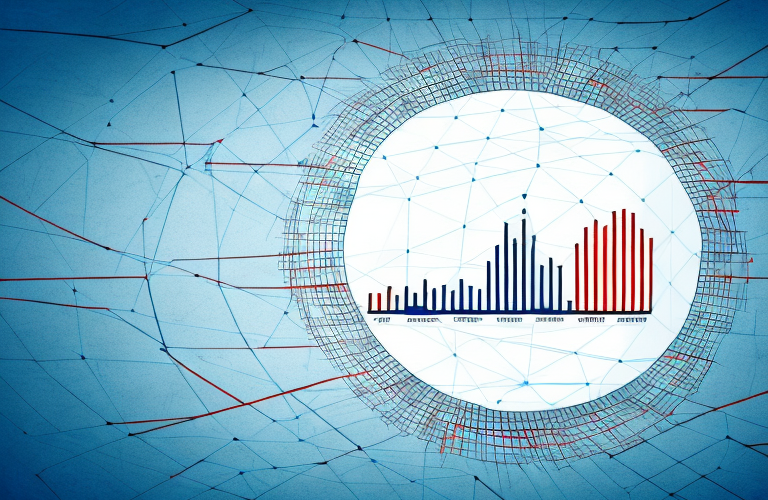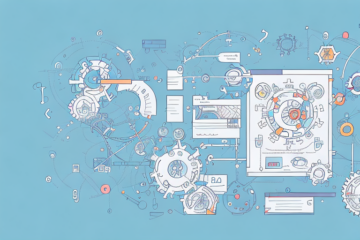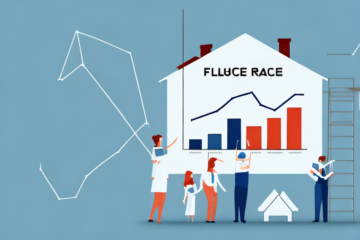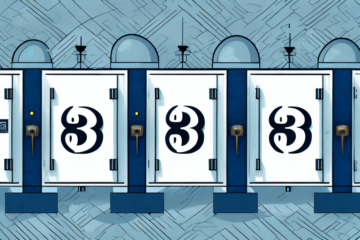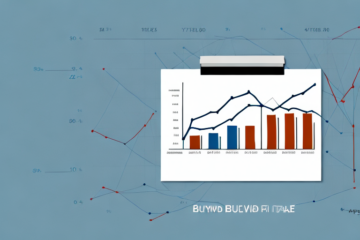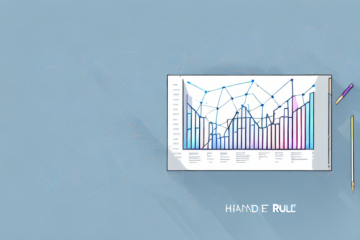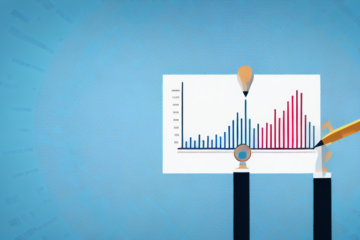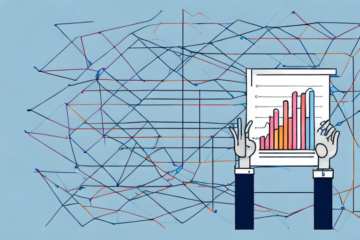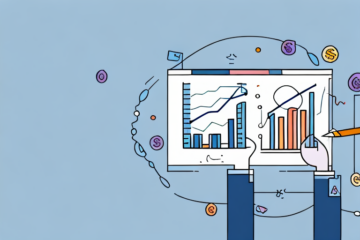Exploring the 2011 U.S. Debt Ceiling Crisis: A Guide to Understanding Finance Terms
The term “debt ceiling” refers to the maximum amount of debt that the United States government can accumulate. When this ceiling is reached, the government is no longer able to borrow and must resort to other measures to finance its spending. The debt ceiling has been raised numerous times throughout history, but the 2011 U.S. Debt Ceiling Crisis marked a significant turning point for the country’s economy.
Debt Ceiling?
The debt ceiling has been a long-standing policy in the United States, dating back to 1917. Throughout history, it has been adjusted numerous times to accommodate the needs of the government, with the most recent change occurring in 2019, when the ceiling was raised to $22 trillion.
However, the debt ceiling has been a controversial topic in recent years, with some arguing that it should be abolished altogether. Critics argue that the debt ceiling is an arbitrary limit that does not actually limit government spending, as Congress can simply vote to raise the ceiling when necessary. They also argue that the debt ceiling creates unnecessary uncertainty and can harm the economy by causing a default on government debt.
On the other hand, supporters of the debt ceiling argue that it is an important tool for controlling government spending and preventing excessive borrowing. They argue that the debt ceiling forces Congress to make tough decisions about spending priorities and encourages fiscal responsibility. Supporters also argue that the debt ceiling helps to maintain the credibility of the United States in the global financial markets.
The History of the U.S. Debt Ceiling Crisis
The 2011 U.S. Debt Ceiling Crisis was centered around the belief that the United States government was rapidly approaching the limit on the amount of debt that they could accumulate. The disagreement between political parties, who were split over the issue of tax increases and spending cuts, only exacerbated the tensions surrounding the crisis. This resulted in the possibility of a government shutdown, which would have caused significant damage to the economy and sensitive subject matter.
The U.S. Debt Ceiling Crisis is not a new phenomenon. In fact, it has been a recurring issue since the 1960s. The debt ceiling is a legal limit on the amount of money that the U.S. government can borrow to fund its operations. The limit is set by Congress and has to be periodically raised to accommodate the government’s increasing debt.
The 2011 crisis was particularly contentious because it coincided with a fragile economic recovery from the Great Recession. The possibility of a government shutdown and a default on U.S. debt payments sent shockwaves through financial markets and caused a downgrade of the U.S. credit rating. The crisis was eventually resolved with a last-minute deal that included both spending cuts and a temporary increase in the debt ceiling.
The Causes of the 2011 U.S. Debt Ceiling Crisis
The 2011 U.S. Debt Ceiling Crisis was sparked by a variety of factors, including increased spending on social programs and the wars in Iraq and Afghanistan, as well as the 2008 financial crisis. These factors combined to create a situation in which the U.S. government was facing an unprecedented level of debt, which was unsustainable in the long term. The crisis was compounded by a political atmosphere in which both sides were unwilling to compromise, leading to gridlock and a potential economic disaster.
Furthermore, the debt ceiling itself played a significant role in the crisis. The debt ceiling is a legal limit on the amount of money the U.S. government can borrow to pay its bills. In 2011, the debt ceiling had to be raised in order to avoid defaulting on the country’s obligations. However, some politicians saw this as an opportunity to push for spending cuts and other policy changes, leading to a standoff between the two parties.
The Impact of the 2011 U.S. Debt Ceiling Crisis on the Economy
The 2011 U.S. Debt Ceiling Crisis had a significant impact on the American economy. The possibility of a government shutdown, coupled with the uncertainty surrounding the crisis, led to a decrease in consumer confidence and a slowdown in economic activity. The stock market also experienced significant volatility during this period, with investors unsure about the future of the country’s finances. The crisis ultimately resulted in a downgrade of the country’s credit rating, which further compounded the negative effects on the economy.
One of the major consequences of the 2011 U.S. Debt Ceiling Crisis was the increase in borrowing costs for the government. As investors became more wary of the country’s financial stability, they demanded higher interest rates on government bonds. This increased the cost of borrowing for the government, which in turn led to higher interest rates for consumers and businesses. This made it more difficult for individuals and companies to obtain loans, which further slowed down economic growth.
Another impact of the crisis was the political polarization it caused. The debate over the debt ceiling became highly partisan, with Democrats and Republicans unable to reach a compromise. This led to a loss of confidence in the government’s ability to effectively manage the country’s finances. The crisis also highlighted the need for long-term solutions to address the country’s growing debt, which remains a major issue in American politics today.
How Did Congress Deal with the 2011 U.S. Debt Ceiling Crisis?
Congress ultimately addressed the 2011 U.S. Debt Ceiling Crisis by agreeing to a series of spending cuts, while also raising the debt ceiling. This agreement, which became known as the Budget Control Act, laid out a plan for reducing the deficit over a ten-year period. However, the cuts contained in this act have been contentious, with some arguing that they have had a negative impact on social programs and the economy.
Despite the passage of the Budget Control Act, the U.S. debt continued to rise in the years following the 2011 crisis. In fact, the debt ceiling has been raised several times since then, with some arguing that this has become a routine occurrence in Congress. Others have criticized the lack of a long-term solution to the country’s debt problem.
The 2011 U.S. Debt Ceiling Crisis also had international implications, as it raised concerns about the stability of the U.S. economy and the global financial system. Some countries, such as China, expressed concern about the impact of the crisis on their own economies, given their significant holdings of U.S. debt. The crisis also led to a downgrade of the U.S. credit rating by Standard & Poor’s, which further fueled concerns about the country’s financial stability.
Key Players in the 2011 U.S. Debt Ceiling Crisis
The 2011 U.S. Debt Ceiling Crisis involved a range of key players, including President Barack Obama and the leaders of the Republican and Democratic parties in Congress. Other influential figures in the crisis include the leaders of major financial institutions and the rating agencies that ultimately downgraded the country’s credit rating.
In addition to these key players, there were also grassroots organizations and advocacy groups that played a significant role in shaping public opinion and influencing the outcome of the crisis. These groups included the Tea Party movement, which pushed for deep spending cuts and a balanced budget amendment, and progressive organizations that advocated for a more balanced approach that included both spending cuts and revenue increases.
Explaining Finance Terms Related to the U.S. Debt Ceiling Crisis
There are a number of finance terms related to the U.S. Debt Ceiling Crisis that can be confusing to those without a financial background. Some of the most important terms to understand include deficit, debt, and credit rating. The deficit refers to the difference between the amount of money the government spends and the amount of money it collects through taxes and other sources. The debt refers to the total amount of money that the government owes, while the credit rating is a measure of how trustworthy the government is seen to be by financial institutions.
Another important term to understand in relation to the U.S. Debt Ceiling Crisis is the debt ceiling itself. The debt ceiling is a limit set by Congress on the amount of money the government can borrow to pay its bills. When the government reaches the debt ceiling, it cannot borrow any more money and must either cut spending or default on its obligations. This can have serious consequences for the economy and financial markets.
Lessons Learned from the 2011 U.S. Debt Ceiling Crisis
The 2011 U.S. Debt Ceiling Crisis represented a significant challenge for the country, but it also provided a number of important lessons. Perhaps the most significant of these is the importance of compromise in political decision-making. The crisis also highlighted the need for long-term planning when it comes to government finances, as well as the importance of trust in financial institutions. Ultimately, the crisis showed that economic stability requires sustained effort and collaboration, and that the consequences of inaction can be severe.
Another lesson learned from the 2011 U.S. Debt Ceiling Crisis is the impact of political brinksmanship on the economy. The prolonged debate and uncertainty surrounding the debt ceiling led to a downgrade in the country’s credit rating, which had negative effects on the stock market and consumer confidence. This highlights the need for politicians to prioritize the well-being of the economy and the American people over their own political agendas.
The Future of the U.S. Debt Ceiling and Its Implications for Finance
The future of the U.S. debt ceiling remains uncertain, with some advocating for its elimination altogether. However, the implications of such a move could be significant, potentially leading to increased inflation and a decreased credit rating. It is clear that finding a sustainable solution to the country’s debt problem will require a difficult balancing act between responsible spending and long-term planning.
One potential solution to the U.S. debt problem is to increase revenue through tax reform. This could involve closing loopholes and increasing taxes on the wealthiest Americans. However, this approach is often met with resistance from those who argue that it would stifle economic growth and job creation.
Another factor to consider in the future of the U.S. debt ceiling is the impact of global economic trends. As the world becomes increasingly interconnected, the financial stability of other countries can have a ripple effect on the U.S. economy. It is important for policymakers to take a global perspective when making decisions about the debt ceiling and other economic issues.
Understanding Fiscal Policy and Its Impact on National Debts
Fiscal policy plays a critical role in the management of national debts, and involves the government’s use of spending and taxation to influence the economy. By increasing spending during times of recession, for example, the government can stimulate economic activity and create jobs. However, increasing government spending can also lead to significant increases in the national debt. Understanding the complexities of fiscal policy is a critical component of addressing the country’s debt problem.
One of the key challenges in implementing effective fiscal policy is balancing the need for short-term economic stimulus with the long-term goal of reducing national debt. While increased government spending can provide a boost to the economy in the short term, it can also lead to inflation and higher interest rates, which can ultimately harm economic growth. As such, policymakers must carefully consider the potential trade-offs of any fiscal policy decisions, and work to strike a balance between short-term and long-term goals.
Analyzing Global Debts and Its Connection to the U.S.
The United States is not the only country struggling with issues of debt and economic instability. Many developed countries across the globe are facing similar challenges, with countries like Greece and Italy struggling with unsustainable levels of debt. The connections between global debts and the U.S. economy are complex and far-reaching, underscoring the importance of cooperation and collaboration in finding solutions to the world’s economic problems.
One factor that contributes to the interconnectedness of global debts is the role of international trade. As countries engage in trade with one another, they often rely on credit and loans to finance their transactions. This can lead to a buildup of debt that affects not only the individual countries involved, but also the global economy as a whole. Additionally, fluctuations in exchange rates and interest rates can have ripple effects across multiple countries, further complicating the issue of global debt.
A Comprehensive Guide to Managing Personal Debts in a Time of Financial Crisis
The lessons of the 2011 U.S. Debt Ceiling Crisis can be applied not just to government finances, but to personal finances as well. During times of financial uncertainty, it is critical to be proactive about managing personal debt and saving for the future. This can include living within one’s means, creating a budget, and setting aside money for emergencies. By taking these steps, individuals can better prepare themselves for the challenges of an uncertain economic future.
Another important step in managing personal debt during a financial crisis is to prioritize debt payments. This means paying off high-interest debts first, such as credit card balances, before tackling lower-interest debts like student loans. It may also be necessary to negotiate with creditors to lower interest rates or create a payment plan that is more manageable.
Finally, it is important to seek out resources and support during times of financial crisis. This can include working with a financial advisor or credit counselor, seeking out government assistance programs, or connecting with community organizations that offer financial education and support. By taking advantage of these resources, individuals can gain the knowledge and tools they need to navigate the challenges of managing personal debt during a time of financial crisis.

